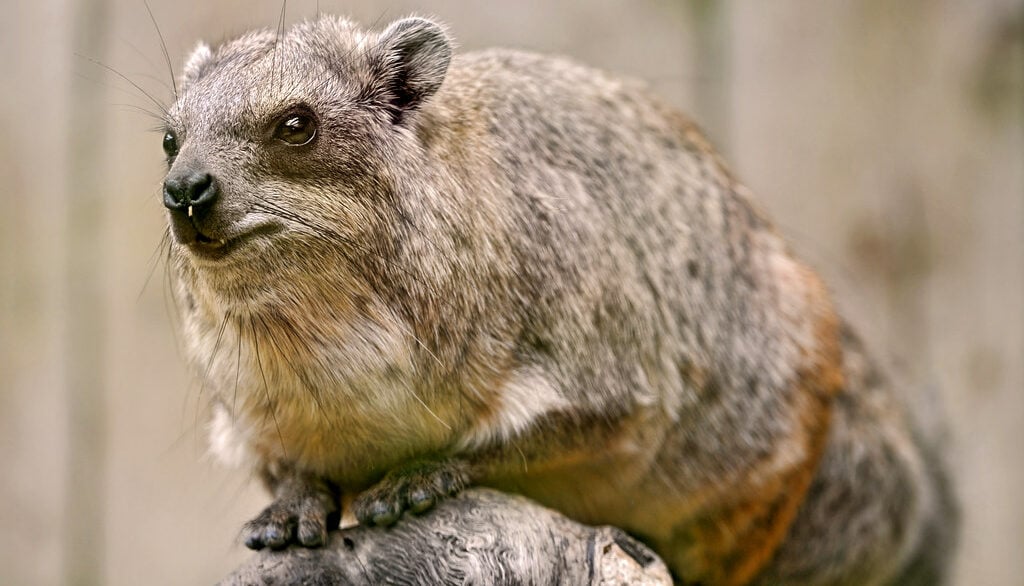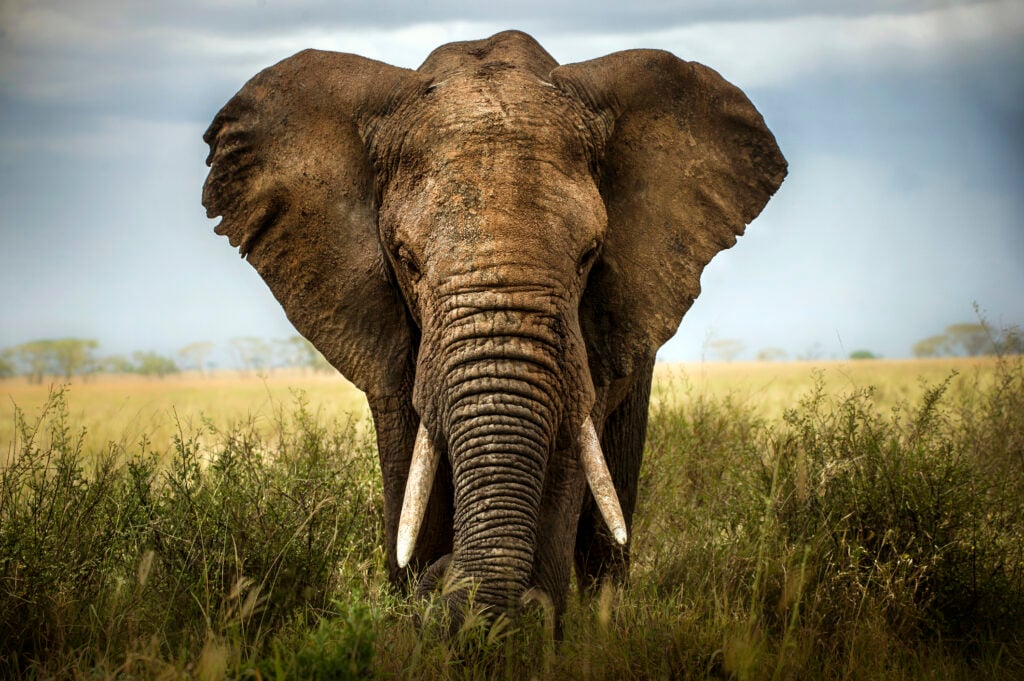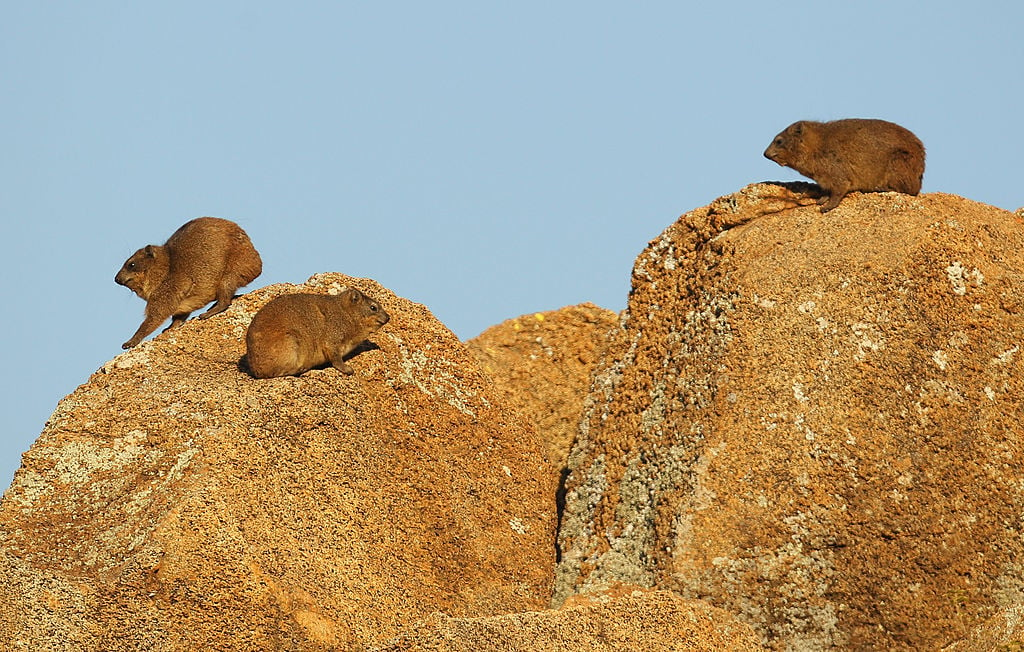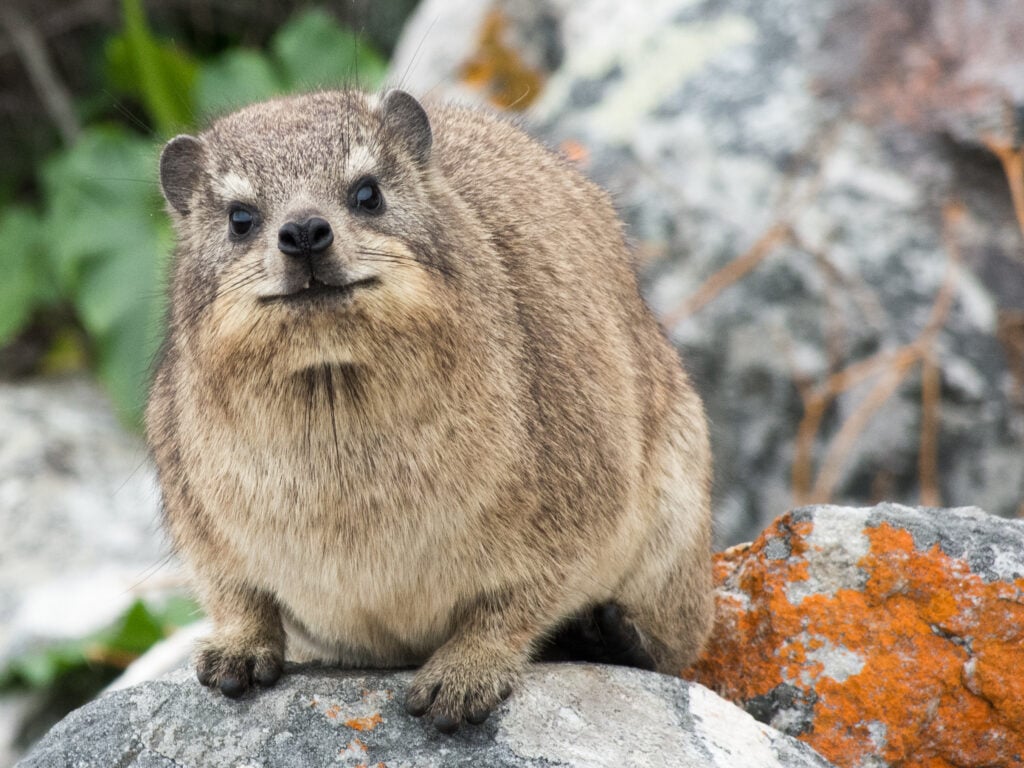The elephant is the world’s largest land animal, renowned for their towering size and strength, but did you know that their closest relative is believed to be a small furry animal known as the rock hyrax?
While it may look like a rodent, these rock hyraxes are actually a different kind of mammal, evolving closely from the same animal group as modern elephants. They can be found throughout much of the African continent, and also in parts of the Levant and the Arabian Peninsula.

It seems counterintuitive that an animal as ginormous as an elephant, with its tough skin and mammoth tusks, could be so closely related to a fluffy creature that scuttles across rocks. Yet scientists have discovered that if you trace back approximately 65 million years ago, they have the same origin.
Since then, the evolutionary paths of the elephant and the rock hyrax have diverged, creating two rather distinct creatures. Both still belong to the animal group Afrotheria, a superorder of mammals including a vast array of species. Within Afrotheria, they both also belong to the same smaller clade, called Paenungulata. It is here that the two species then differentiate, with the elephant part of the Tethytheria, and the rock hyrax a member of the Hyracoidea species, where the ‘hyrax’ name comes from.

Despite the obvious differences, upon closer examination, there are physical similarities between the elephant and the rock hyrax. The most visible is the appearance of a shared set of tusks, though the size of the rock hyraxes tusks are rather different, and are large vertical incisors. Their feet, meanwhile, are both known as “semi-digitigrade”, meaning their bone structure leaves them both on their tip-toe. Both species also have extremely sensitive footpads.
As well as having similar feet, both the elephant and the rock hyrax have exceptional hearing and memories. While elephants have giant brains and ears, hyraxes demonstrate significantly better brain functionality compared to other animals of a similar size.

Elephants famously have the longest pregnancies of any living mammal, running between 21 and 22 months. The rock hyrax doesn’t have to wait quite that long, but their gestation can last seven to eight months. This is exceptionally long for mammals their size. Domestic cats, for example, usually carry their young for only two months. The reproductive characteristics are also similar between elephants and the rock hyrax, with males from both species storing their testes in their abdomen rather than external scrotums. During breeding season, male rock hyraxes’ testicles can increase in size by as much as 20%.
Historically, the elephant had closer relatives than the rock hyrax, with the extinct mammoth sharing over 95% of its DNA and a more obvious association. There also remains a bit of disagreement within the scientific community on what living animal is the closest, with an exact DNA comparison not clear. Some argue that the elephant’s nearest cousin is in fact the underwater sirenian (manatees and dugongs), and hyraxes are a further outgroup. All are linked by the Paenungulata clade.
Read More: IS THIS THE WORLD’S HAPPIEST ANIMAL?
Unsurprisingly, rock hyraxes and elephants have evolved to now have very different behaviors. The former are nimble animals that predominantly live, as their name suggests, on rocky terrain. Another unusual twist to the creature is the time they spend basking in the sun in order to elevate their body temperature, much like reptiles.
The rock hyrax is one of four species of hyrax, and they weigh anywhere from 4 to 12 pounds. They live in colonies typically dominated by a single male and are aggressive during breeding season. They also consistently urinate in the same place, and the large amounts of calcium can turn their cliff homes white in color. The calcium present in their urine has been used as medicine.

Rock hyraxes consistently urinate in the same place, and the large amounts of calcium carbonate in their urine turn the cliffs where they live white. The calcium carbonate crystals were used as medicine, both by several African tribes as well as by Europeans, to treat such ailments as epilepsy, hysteria and various injuries.
If you want to learn more about the world’s largest mammal, check out our video below.





